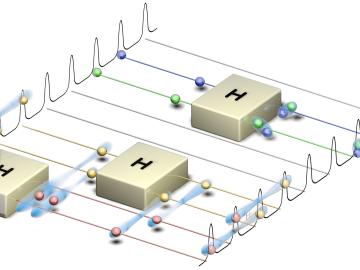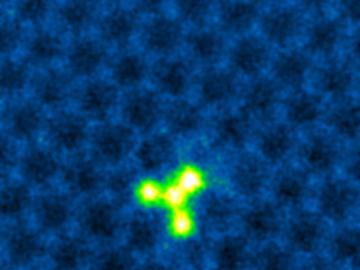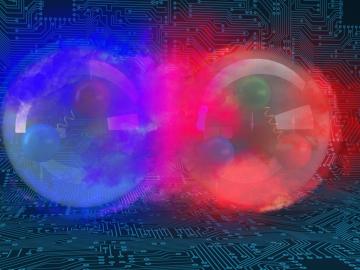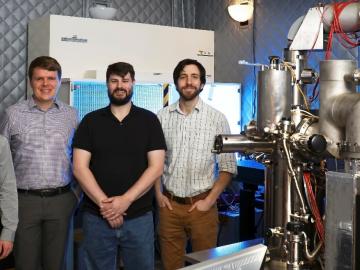
Filter News
Area of Research
News Topics
- 3-D Printing/Advanced Manufacturing (1)
- Artificial Intelligence (1)
- Big Data (1)
- Bioenergy (1)
- Biology (2)
- Biomedical (1)
- Computer Science (22)
- Coronavirus (1)
- Cybersecurity (5)
- Energy Storage (1)
- Exascale Computing (4)
- Frontier (4)
- Fusion (1)
- Grid (3)
- High-Performance Computing (8)
- Isotopes (1)
- Machine Learning (1)
- Materials (8)
- Materials Science (10)
- Microscopy (2)
- Nanotechnology (7)
- Neutron Science (5)
- Physics (6)
- Quantum Computing (33)
- Quantum Science (51)
- Security (3)
- Simulation (7)
- Summit (2)
Media Contacts

Researchers used neutron scattering at Oak Ridge National Laboratory’s Spallation Neutron Source to investigate bizarre magnetic behavior, believed to be a possible quantum spin liquid rarely found in a three-dimensional material. QSLs are exotic states of matter where magnetism continues to fluctuate at low temperatures instead of “freezing” into aligned north and south poles as with traditional magnets.

By analyzing a pattern formed by the intersection of two beams of light, researchers can capture elusive details regarding the behavior of mysterious phenomena such as gravitational waves. Creating and precisely measuring these interference patterns would not be possible without instruments called interferometers.




Computer scientists at Oak Ridge National Laboratory have developed an open source software platform that allows quantum programs to run on multiple quantum computers regardless of their unique architecture.

Qrypt, Inc., has exclusively licensed a novel cyber security technology from the Department of Energy’s Oak Ridge National Laboratory, promising a stronger defense against cyberattacks including those posed by quantum computing.

Scientists at the Department of Energy’s Oak Ridge National Laboratory are the first to successfully simulate an atomic nucleus using a quantum computer. The results, published in Physical Review Letters, demonstrate the ability of quantum systems to compute nuclear ph...




